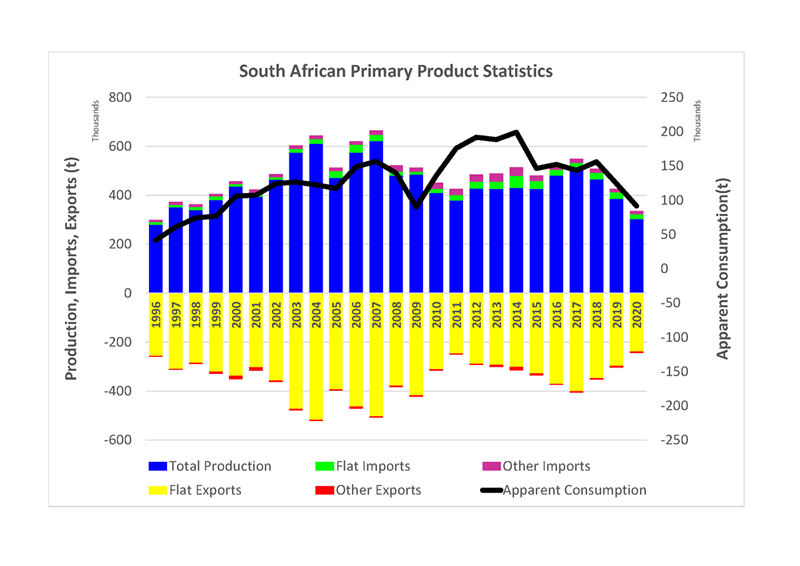22 February 2021
Against the backdrop of the recent State of the Nation Address and the forthcoming budget speech later this month Sassda Acting Executive Director Michel Basson takes an in-depth look at the ‘state of the stainless steel nation’ and how it is expected to fare in 2021…
1. To say times are tough seems like something of an understatement amidst the profound effects of the COVID-19 pandemic on people’s lives and livelihoods – how would you say the South African stainless steel sector has fared in the last 12-months amidst this turmoil?
Before the influence of the pandemic the stainless steel sector, as it was with the rest of the economy, was under pressure. The pandemic added to this due to the initial hard lockdown and as the spread of the virus impacted the health of employees. During the initial stages of the lockdown, Sassda worked with dtic and played a key part in getting the stainless steel sector opened at 50% whereas other industries had to open to a 30% level. However, the compounded effect of a weak economy and the halt on activities by the pandemic created a shrinkage in tonnage converted locally, of more than 20%.
Downstream markets for fabricated products has been a problem for our manufacturers for some time and it has been aggravated by the pandemic. The local use of stainless steel for conversion (and therefore job creation) declined by more than 20% over the last year.

2. In terms of the current lockdown and curtailed cross border trade – What would you say are the i. Key disadvantages for the local stainless steel sector and key ii. Advantages (local procurements, local sector rejuvenation e.g. holloware, construction/infrastructure).
My philosophy is that you need to see light in dark times to keep going. This crisis also had some positive outcomes. Our members had a re-look at staff deployment, use of facilities, cost structures and many were able to implement new ways of effective working, albeit forced. It also came with the bitter taste of staff retrenchments, but as we have seen in the past – those who survive will come out stronger. We are fortunate to be in a very resilient industry.
3. Within this context why do you think it is still so important to have a stainless steel association in South Africa – does it still have a role to play and what value does it add to the sector and its members?
We believe that the relevance of an association like Sassda is now more pronounced than ever. Now is the time when Sassda relays information on government assistance schemes to members, advocate for our industry and make sure that our members are technically as sharp as ever through online training as one platform. We have started last year with weekly webinars that are not only technical but focussed on new markets (especially Africa) and how to prepare your company for potential exports.
4. How has Sassda made a full transition to the online/digital realm during the last three years and why is this now one of its most important strengths? Training/Webinars?
Sassda has been preparing for improved member contact for about 2 years. This included online presentations, virtual plant visits, online training and the like. Since the lockdown, we were able to quickly adapt within the space of a month and bring this goal forward rapidly and we are currently serving more members than ever before with quality information via the online channel of choice.
5. What are the other key focus areas for Sassda in 2021?
Key focus areas will be to continue our close working relationship with the Department of Trade, Industry and Competition, as well as the Department for SSME development since a majority of our members can be classified as small or medium enterprises.
We will focus on bringing information of downstream markets to our value chain (especially those within the African free trade agreement)


